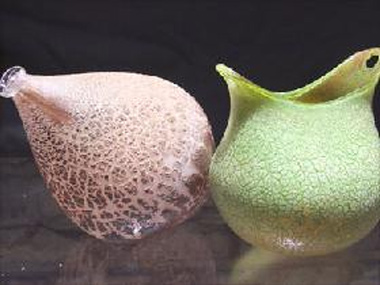JEMA Press |
CBS News |
|||
Feature Shoot |
|||
Ilkka |
|||
Järvi-Pohjanmaan Torstai |
|||
CultureNorthernIreland.org |
|||
The Irish News |
|||
The Newry Democrat |
|||
IL SECOLO XlX |
|||
The City Paper |
|||
SALES FIGURES – Six Artists Get Down to Business in New Exhibition
POST SECRET: A gallery goer writes a letter at the John Erickson Museum Of Art's portable mailroom.
IN THE PHILOSOPHY OF ANDY WARHOL, one of the world's best known artists sums up and defends his career ambitions by declaring "good business is the best art." As commercial as the art world might be these days, you could wander through a half dozen galleries before finding someone who would agree with this business-for-art's-sake philosophy. But the playfully titled Cottage Industry, the new exhibit at the Contemporary Museum, tests Warhol's claim with work by six artists who manipulate, maneuver through, and even mirror contemporary business practices. —Martin L. Johnson |
|||
IMA Blog |
|||
REBECCA UCHILL, Associate Curator at the Indianapolis Museum of Art (IMA), discusses JEMA and Saya Moriyasu —Rebecca Uchill |
|||
Cottage Industry: The Metropolitan Spirit |
|||
“The exhibition not only challenges the viewer but also the museum environment in which it is displayed. Another impressive business venture, The John Erikson Museum of Art (JEMA) challenges contemporary museum strategies, disavowing the site-specific, traditional methods of displaying visual art. The experimental methods of model boxes are carried and shown to the public on the streets of New York. JEMA’s small “exhibition space” functions in the diameter of inches, but gives the artist an affordable, efficient, portable, constructed, and maintained license for artistic expression. What if Edible Estates set up an installation through JEMA that was shown to the public on the streets of Baltimore? JEMA questions the elitism of the traditional museum environment, allowing any passerby to partake in an artistic experience. The underground graffiti scene would be proud of JEMA’s street credit, but there’s more to JEMA than one might think. JEMA’s continuous movement allows for intercommunication between artists and museums on a community wide-spectrum; the project’s portability allows art installations to be brought to you without the cost, time and effort extorted by the traditional museum environment...” —Emily Scibilia |
|||
ArtList DC |
|||
“The John Erickson Museum of Art (JEMA) is a miniaturized traveling "museum in a box." Evocative of flux-kits and DIY craft projects, JEMA is a cleverly constructed entity used to critique overly excessive museum practices.” —Ding Ren |
|||
Modern Art Notes |
|||
“All of the projects in Cottage Industry are small, focused and intense, personal reactions against big-boxism of all types. (Including in art/history museum form.) The City Reliquary and the John Erickson Museum of Art are the two most dramatic reactions: They're museums reduced to the smallest possible physical size. There's a message here for art museums and related institutions: When you become big you become impersonal. When you become personal you fall out of touch with your audience, with your communities. Most of the projects in Cottage Industry are an attempt to re-connect with community, but also with art, history and neighborhood. Big institutions pay heed.” —Tyler Green |
|||
The Baltimore Sun
|
|||
LAURA VOZELLA writes about Sean Miller and Connie Hwang’s Art Museum Dust Collection at the Contemporary Museum in Baltimore —Laura Vozella |
|||
The New York Times |
|||
THE CREATIVE SPIRIT, strolling through SoHo with its fringe flying
Hiroko Masuike for The New York Times -
|
|||
Weekly Volcano |
|||
TWO THINGS IN ICE—Ice Box Contemporary Art hosts "81 things on a stick" and the John Erickson Museum of Art.
Bethany Taylor
|
|||
The Seattle Times |
|||
Michael McCafferty
|
|||
El Vocero Magazine |
|||
 Obras de John Erickson Museum of Art se exhiben en la gallería de UICA
|
|||
The Atlanta Journal-Constitution |
|||
ALTART GOES ALT-ART—Show at Saltworks focuses on alternative approaches in unusual format.
One of Mandy Sheedy's art pieces includes hand-sewn bags with plants
|
|||
Miami News Times |
|||
ART DURING BASEL—Your unofficial guide to all that's hanging. Could it be, an art museum in a suitcase. High Art -- Sergio Vega JEMA Museum will at once be the smallest museum and at one point, the highest. JEMA is the John Erickson Museum of Art, and it really is a suitcase, and it will be flown in on December 4 at 3:00 p.m. This piece of "airplane performance" art will, according to the artist, explore issues related to High Art through "the testimonies" of parrots from Brazil. Yep, you read it right. Check it out at the opening reception at 8:30 on Thursday, December 4, or anytime till January 10 at the Madonna Building in the Design District, 3900 N. Miami Ave. |
|||
|
|||
|
|||